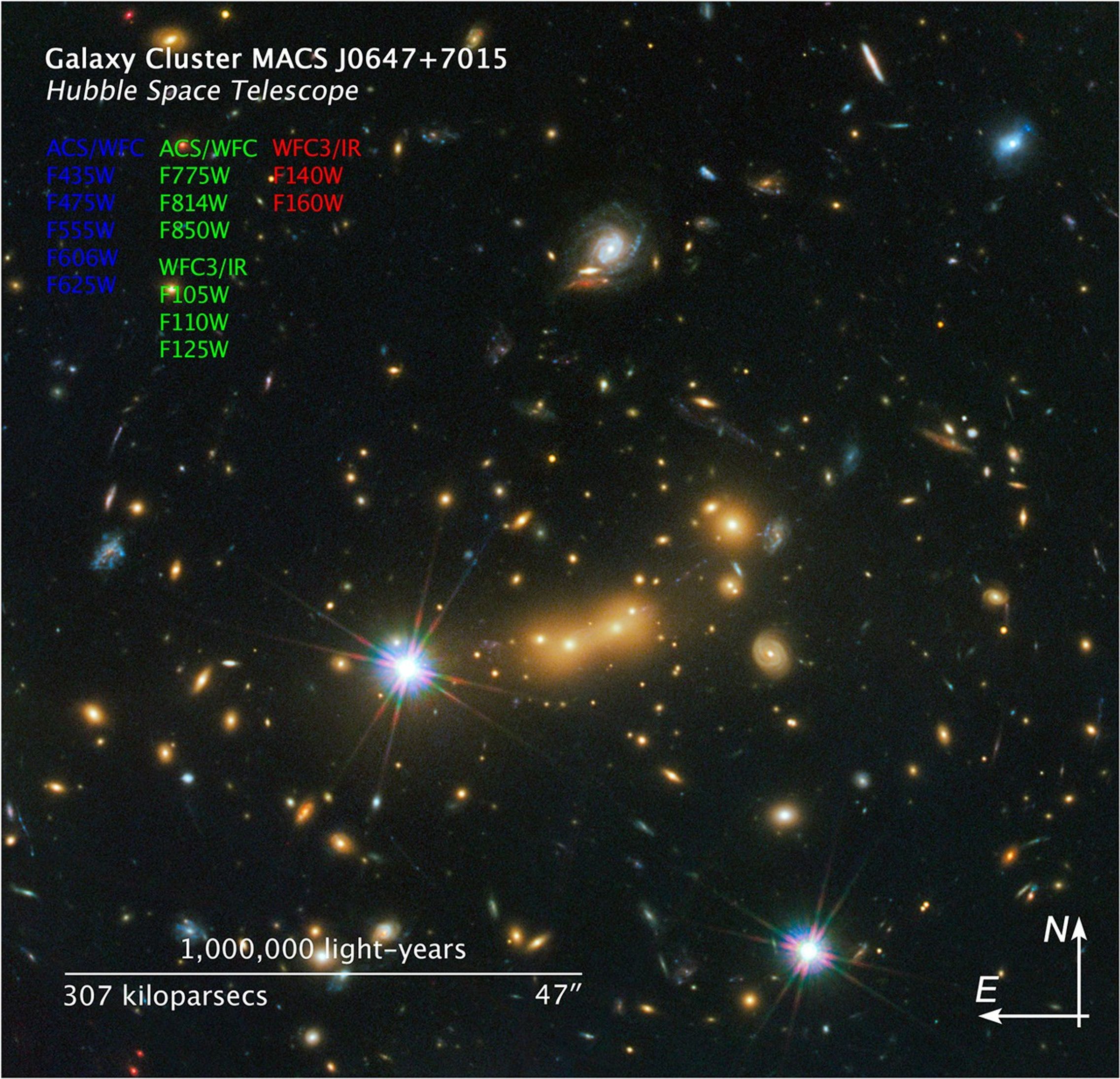1 min read
Cluster MACS J0647 Provides Three Magnified Views of Distant Galaxy
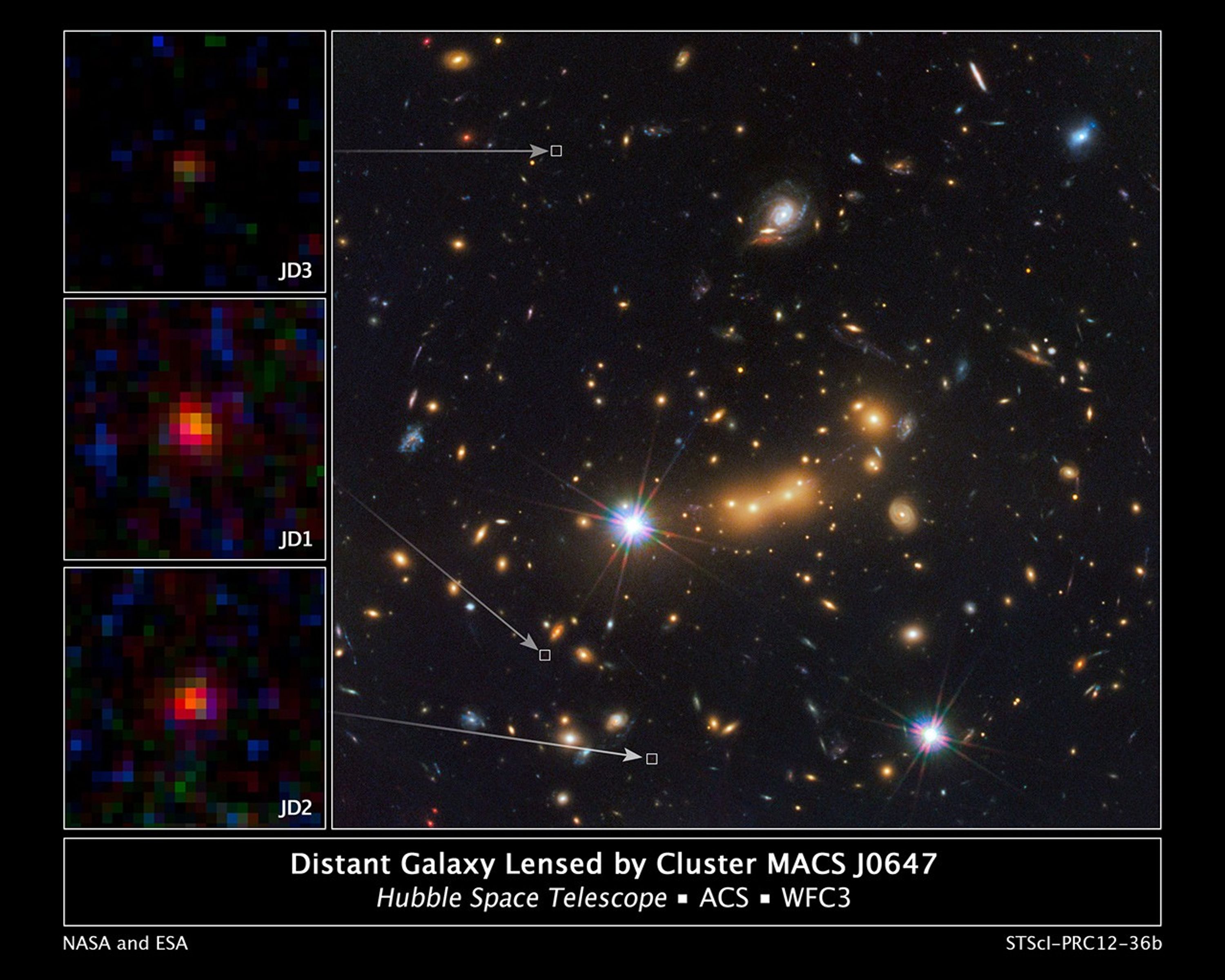
In this image, astronomers use NASA's Hubble Space Telescope and a cosmic zoom lens to uncover the farthest known galaxy in the universe.
The newly discovered galaxy, named MACS0647-JD, is very young and only a tiny fraction of the size of our Milky Way. The object is observed 420 million years after the big bang, when the universe was 3 percent of its present age of 13.7 billion years.
Astronomers used the powerful gravity from the massive galaxy cluster MACS J0647+7015 to magnify the light from the distant galaxy, an effect called gravitational lensing. The bright yellow galaxies near the center of the image are cluster members.
Due to the gravitational lensing technique, astronomers observed three magnified images of MACS0647-JD with the Hubble telescope. The cluster's gravity boosted the light from the faraway galaxy, making the images appear approximately eight, seven, and two times brighter than they otherwise would, enabling astronomers to detect the galaxy more efficiently and with greater confidence. Without the cluster's magnification powers, astronomers would not have seen this remote galaxy. The three close-up images of the magnified galaxy appear in the insets at left.
This is the latest discovery from a large program, called the Cluster Lensing And Supernova survey with Hubble (CLASH), that uses natural zoom lenses to reveal distant galaxies in the early universe.
This image is a composite taken with Hubble's Wide Field Camera 3 and the Advanced Camera for Surveys. The observations were taken Oct. 5 and Nov. 29, 2011.
About the Object
- R.A. PositionR.A. PositionRight ascension – analogous to longitude – is one component of an object's position.06h 47m 49.78s
- Dec. PositionDec. PositionDeclination – analogous to latitude – is one component of an object's position.70° 14' 56.4"
- ConstellationConstellationOne of 88 recognized regions of the celestial sphere in which the object appears.Camelopardalis
- DistanceDistanceThe physical distance from Earth to the astronomical object. Distances within our solar system are usually measured in Astronomical Units (AU). Distances between stars are usually measured in light-years. Interstellar distances can also be measured in parsecs.The distance to the cluster is 5.6 billion light-years (1.7 billion parsecs or redshift z = 0.591). The distance to the lensed source is 13.3 billion light-years (4 billion parsecs or redshift z = 11).
About the Data
- Data DescriptionData DescriptionProposal: A description of the observations, their scientific justification, and the links to the data available in the science archive.
Science Team: The astronomers who planned the observations and analyzed the data. "PI" refers to the Principal Investigator. - InstrumentInstrumentThe science instrument used to produce the data.HST>ACS/WFC and HST>WFC3/IR
- Exposure DatesExposure DatesThe date(s) that the telescope made its observations and the total exposure time.2004, 2005, 2007, and 2011, Exposure Time: 27.5 hours
- FiltersFiltersThe camera filters that were used in the science observations.ACS/WFC: F435W (B), F475W (g), F555W (V), F606W (V), F625W (r), F775W (I), F814W (I), and F850LP (z) WFC3/IR: F105W (Y), F110W (YJ), F125W (J), F140W (JH), and F160W (H)
- Object NameObject NameA name or catalog number that astronomers use to identify an astronomical object.MACS J0647+7015, MACS0647-JD
- Object DescriptionObject DescriptionThe type of astronomical object.Galaxy Cluster/Gravitational Lens and z=11 Galaxy Candidate
- Release DateNovember 15, 2012
- Science ReleaseNASA Great Observatories Find Candidate for Most Distant Galaxy Yet Known
- Credit

This image is a composite of separate exposures acquired by the ACS and WFC3 instruments. Several filters were used to sample various wavelengths. The color results from assigning different hues (colors) to each monochromatic (grayscale) image associated with an individual filter. In this case, the assigned colors are: Blue: ACS/WFC F435W (B) + F475W (g) + F555W (V) + F606W (V) + F625W (r) Green: ACS/WFC F775W (I) + F814W (I) + F850LP (z), and WFC3/IR F105W (Y) + F110W (YJ) + F125W (J) Red: WFC3/IR F140W (JH) + F160W (H)

Related Images & Videos
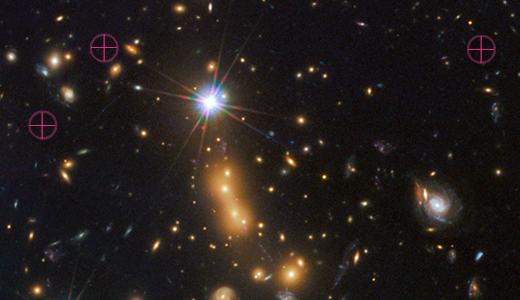
Distant Galaxy Lensed by Cluster MACS J0647
In this image, astronomers use NASA's Hubble Space Telescope and a cosmic zoom lens to uncover the farthest known galaxy in the universe. The newly discovered galaxy, named MACS0647-JD, is very young and only a tiny fraction of the size of our Milky Way. The object is observed...
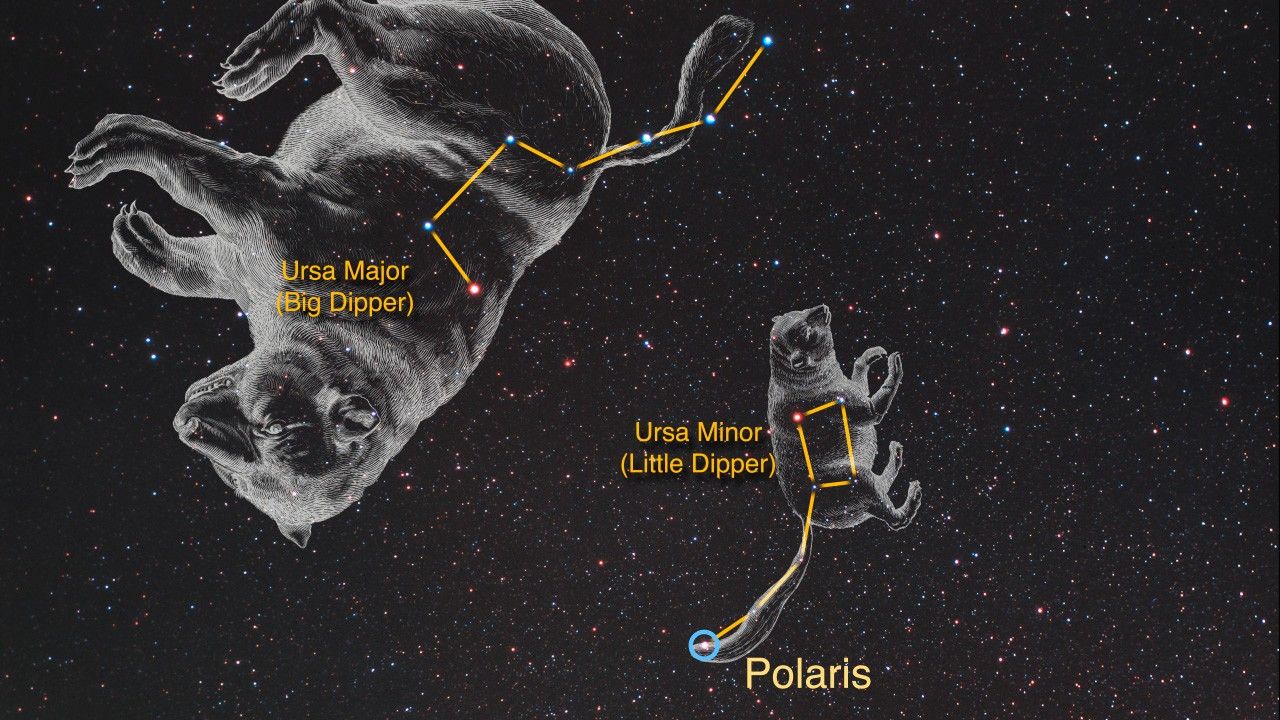
MACS J0647 Zoom Sequence (Annotated)
This video zooms in on distant galaxy cluster MACS J0647+7015 (or MACS J0647 for short). Astronomers used this massive galaxy cluster as a giant cosmic telescope to uncover the farthest known galaxy in the universe to date, called MACS0647-JD. This is the latest discovery from a...
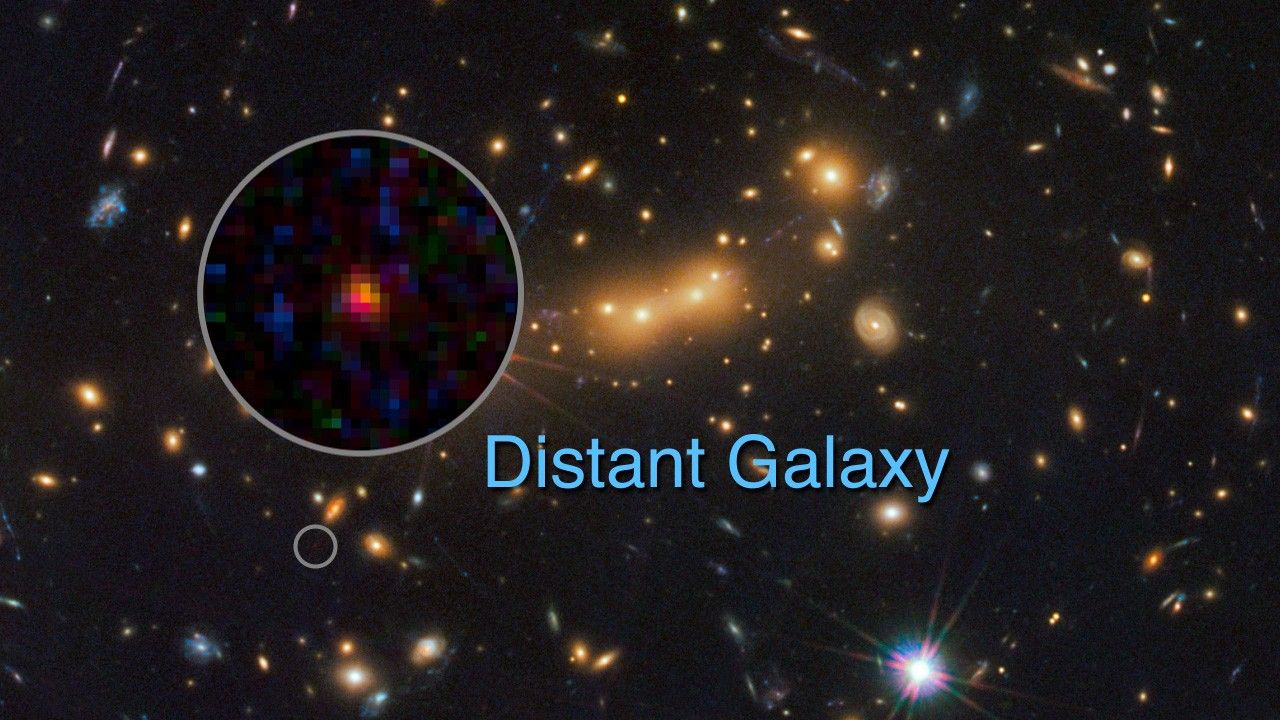
MACS0647-JD Zoom Sequence (Annotated)
This video zooms in on distant galaxy cluster MACS J0647+7015, or MACS J0647 for short. Astronomers used this massive galaxy cluster as a giant cosmic telescope to uncover the farthest known galaxy in the universe to date. The newly discovered galaxy, called MACS0647-JD, is very...
Share
Details
Claire Andreoli
NASA’s Goddard Space Flight Center
Greenbelt, Maryland
claire.andreoli@nasa.gov

































